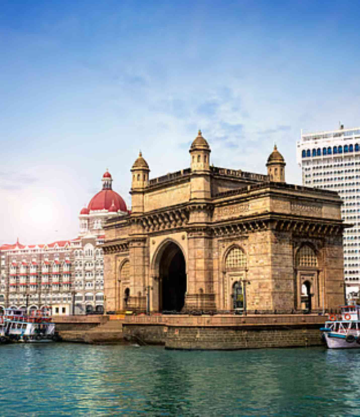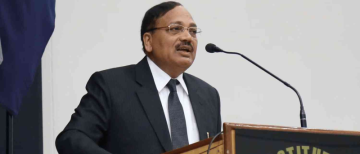America has long been seen as a land of opportunity, attracting global talent seeking better living conditions and work in a progressive economy. Among these, Indian professionals have become pivotal in fields like IT, healthcare, and education, contributing to innovation and economic growth. However, recent years have seen rising prejudice and discrimination against Indian immigrants due to political changes, economic challenges, and shifts in immigration policies. Xenophobic rhetoric has cast immigrants as burdens, fuelling political tensions and targeting skilled workers under programs like the H-1B visa, which have greatly benefited the U.S. economy.
Economic competition and structural changes have exacerbated these tensions, with Indian professionals often scapegoated for wage declines and unemployment. Discrimination extends beyond workplaces to social and cultural spheres, manifesting in hate crimes, physical attacks, and vandalism against Indian-owned businesses. This hostility undermines social cohesion and challenges the image of the U.S. as a hub of diversity and innovation.
Anti-immigrant attitudes, particularly among groups like MAGA supporters, perpetuate false narratives about H-1B visa holders “stealing jobs,” despite their contributions in specialised fields with domestic talent shortages. Political rhetoric further dehumanises Indian immigrants, erasing their achievements in sectors like AI and biotechnology, which drive corporate revenues and innovation.
Hate crimes against Indian Americans, including the 2017 Kansas shooting, highlight the severity of racial bias. Such incidents reflect societal tensions and challenge America’s principles of pluralism. Addressing these issues requires reforms in hate crime laws, advocacy, and awareness campaigns showcasing Indian contributions. Empowering Indian immigrants to share their stories can foster empathy and combat stereotypes.
Ultimately, supporting skilled immigration, such as through the H-1B program, aligns with America’s values of equality and opportunity, ensuring it remains a global leader in innovation while embracing its diverse populace.
Political Polarisation and Its Impacts
Immigration policies in the U.S. have undergone significant shifts, leading to instability for Indian immigrants and their families. High-profile hate crimes, such as the Kansas shooting targeting Indian engineers, highlight the polarising environment and erode immigrant confidence in the host society. FBI reports show a rise in hate crimes against Indians, fuelled by political narratives blaming immigrants for societal issues. This fosters fear, discourages immigration, and betrays the country’s core values of diversity and inclusion.
The impact extends to families navigating complex legal processes and industries facing challenges in talent acquisition, reducing innovation and competitiveness. Skilled Indian professionals in technology and healthcare are often undervalued despite their contributions to critical sectors.
Indian Contributions to Silicon Valley
Silicon Valley thrives on immigrant talent, with Indian professionals playing a crucial role in advancements like AI, cloud computing, and cybersecurity. Leaders like Sundar Pichai (Google) and Satya Nadella (Microsoft) represent a broader trend of Indian professionals driving innovation. Over 70% of recent H-1B visa recipients are Indian, many with advanced degrees from U.S. institutions, strengthening America’s technological edge. Their contributions enable transformative solutions across industries, boosting efficiency and unlocking new possibilities.
Rising Racism and Economic Repercussions
Xenophobia in the U.S. is rising, impacting Indian professionals in Silicon Valley. Discrimination, lack of career advancement, and restrictive immigration policies demoralise foreign workers, deterring talent from investing in U.S. opportunities. Stress from visa uncertainties and potential deportation pushes skilled professionals to countries like Canada and Germany, which offer friendlier policies. This talent drain threatens Silicon Valley’s dominance, potentially shifting the epicenter of technological innovation to more inclusive nations. The economic repercussions extend beyond tech to sectors like healthcare and finance, reducing America’s global competitiveness and economic growth.
Addressing the Challenges
To preserve the contributions of Indian professionals and sustain Silicon Valley’s technological leadership, targeted measures are essential. Legislators should streamline visa processes for skilled workers and establish pathways to permanent residency, reducing barriers and reinforcing the U.S. as a talent magnet.
Employers play a vital role by fostering workplace equality, implementing bias training, and offering apprenticeships to help immigrants maximise their potential. Recognising Indian professionals’ achievements can counter stereotypes and strengthen their integration into the system. Indian professionals have significantly shaped Silicon Valley and the U.S. economy through their expertise in technology, culture, and innovation. However, racism and restrictive policies threaten these gains. By addressing these challenges with cohesive strategies, the U.S. can reaffirm Silicon Valley’s status as a global model of innovation and inclusivity.
Potential Talent Surplus in India
Restrictive U.S. immigration policies and discomfort among Indians abroad could lead to a significant return of skilled professionals to India, presenting both opportunities and challenges. While this talent inflow could boost economic growth, it may also strain India’s employment market, already struggling with oversupply in urban tech hubs. A surplus of skilled labor could suppress wages and increase unemployment, particularly for highly qualified workers and new entrants.
Returning professionals often expect systems akin to those in the U.S., including modern infrastructure and efficient governance. India’s existing gaps in transport, healthcare, and bureaucracy may lead to disappointment, highlighting the urgent need for infrastructure upgrades. Cultural adjustments also pose challenges, as returnees may experience isolation due to differences between international and domestic work environments.
To address these issues, India must adopt pragmatic solutions:
- Infrastructure Investment: Develop transportation, broadband access, and urban systems to support the returning workforce.
- Education and Re-skilling: Align the education system with global standards and implement re-skilling programs to bridge gaps in innovation and business practices.
- Policy Reforms: Create startup-friendly policies to foster entrepreneurship, ease bureaucratic hurdles, and leverage returnees’ global experience and networks.
- Integration Platforms: Develop online portals to facilitate the reintegration of professionals, addressing both technical and cultural challenges.
The return of skilled professionals presents a chance for India to strengthen its position as a global IT hub. Their international exposure and experience can drive innovation, inspire local talent, and enhance India’s global competitiveness. By investing in infrastructure, reforming policies, and fostering collaboration, India can turn this talent surplus into an asset, ensuring continued leadership in human capital and innovation.
Here’s a concise and structured summary of the opportunities, risks, and strategic recommendations from your text:
Opportunities
1. Innovation and Entrepreneurship
• Returning professionals bring expatriate experience and technical expertise in emerging technologies like AI, blockchain, and quantum computing.
• Their return can catalyse rapid innovation, strengthen the local startup ecosystem, and aid the development of unicorns.
2. Strengthening Global Networks
• Connections with international clients, partners, and investors can facilitate knowledge exchange, foreign direct investment (FDI), and collaborations.
• These networks can help Indian companies adopt global best practices and improve competitiveness.
3. Building Human Capital
• Returnees can mentor junior professionals, enhancing the workforce’s quality and bridging skill gaps in the IT industry.
• Their experience can address barriers to fully exploiting new opportunities.
4. Boosting Research and Development (R&D)
• Returnees can lead R&D initiatives, fostering partnerships between universities and companies.
• This can drive the creation of home-grown technologies, reducing dependency on imports.
Risks
1. Inadequate Infrastructure and Policies
• Weak infrastructure, bureaucratic delays, and organisational constraints may limit the effectiveness of the returning talent pool.
2. Reverse Brain Drain
• Without conducive conditions, skilled professionals may migrate again to countries offering better opportunities.
3. Lack of Collaboration
• Uncoordinated efforts between public and private sectors can reduce the economic impact of returnees.
4. Social and Cultural Challenges
• Adjusting to domestic work culture and societal structures can lead to dissatisfaction and underutilisation of skills.
Strategic Recommendations
1. Policy Reforms and Incentives
• Introduce tax reliefs, grants, and subsidies to attract and retain talent.
• Simplify business establishment processes and enhance patent acquisition frameworks to encourage innovation.
2. Public-Private Partnerships
• Foster collaborations between public institutions and private enterprises to co-invest in R&D, share knowledge, and align workforce development programs with industry needs.
3. Building World-Class Infrastructure
• Invest in smart infrastructure, enhanced connectivity, and improved facilities to make India an attractive destination for professionals and investors alike.
By addressing these areas, India can harness the potential of returning professionals to drive innovation, boost economic growth, and solidify its position as a global IT hub.
Cultural Integration Programs
To facilitate the reintegration of returning professionals into India’s work culture, companies and the government can adopt various policies and initiatives:
1. Cultural Orientation Programs
• Offer orientation sessions to help returnees adapt to India’s professional environment, cultural nuances, and local business practices. These programs can include mentorship, peer support, and cultural sensitivity training.
2. Continuous Learning and Networking Opportunities
• Encourage returning professionals to stay connected with global networks by offering platforms for continuous learning, networking, and collaboration with international peers.
3. Support for Work-Life Balance
• Develop programs that support a healthy work-life balance, considering the transition from a different work culture. These programs can help mitigate culture shock and ease reintegration into the Indian workforce.
Continuity and Connection: A Call for Solidarity and Planning
Challenges Faced by Indian Immigrants
The rise in prejudice against Indian immigrants, particularly in countries like the United States, is a significant challenge. This issue impacts not only the Indian diaspora but also affects broader international relations, the economy, and societal integration. For Indian Americans, this prejudice is not just about personal marginalisation but about how their contributions to American society remain under-appreciated or overlooked.
Historically, Indian immigrants were recognised for their intelligence and hard work, contributing to sectors like science, technology, healthcare, and education. However, growing xenophobia, discrimination, and violence now threaten the social fabric and the sense of belonging for many in the Indian American community. This shift is eroding their social membership and reinforcing stereotypes that have lasting negative effects.
Struggle for Identity and Recognition
Indian Americans now grapple with a sense of belonging, torn between their cultural heritage and the societal pressures to assimilate. With each generation, the community becomes more deeply rooted in the United States, yet they continue to face the dilemma of balancing their identity as both Indian and American. This challenge has intensified as discrimination grows, leading to questions about whether they are truly welcomed or simply tolerated.
Economic and Societal Implications for India
The prejudice faced by Indian immigrants has serious economic and societal implications for India. Indian professionals abroad have contributed significantly to India’s economy through remittances and their role in key sectors like IT, healthcare, and education. Rising prejudice against Indian nationals abroad can affect their mobility and hinder India’s ability to maintain its competitive workforce. Restrictive immigration policies could limit the flow of highly skilled professionals, students, and workers, potentially damaging India’s global standing.
A Call for Solidarity and Strategic Planning
To address these challenges, both Indian immigrants and India itself must take proactive steps to combat prejudice and ensure continuity in international connections:
1. Building Collective Advocacy
• Indian immigrants can form community organisations and advocacy groups to challenge racist practices and educate the broader public about the positive contributions of Indian Americans. Strengthening ties with other immigrant communities can form a powerful coalition against xenophobia.
2. Government Diplomacy and Economic Partnerships
• The Indian government should engage in diplomatic campaigns to strengthen ties with host countries, emphasising economic partnerships and the value of Indian nationals abroad. This would involve increasing the number of lobbyists and advocates who can represent the interests of Indian citizens globally.
3. Long-term Strategy for Global Prejudice
• India must adopt a long-term strategy to address global prejudice, ensuring that returning talent and inclusive growth are prioritised. This will help India remain competitive and relevant in the global economy, regardless of shifting attitudes toward its diaspora.
By taking these steps, India can foster a more inclusive and supportive environment for its diaspora, ensuring that their contributions continue to benefit both India and the host countries.
International Solidarity
The rising bias against Indian immigrants, particularly in countries like the United States, presents a challenge not only for the Indian diaspora but also for the global community. Addressing this issue requires coordinated efforts between the U.S. and India, aiming to tackle the roots of xenophobia and foster a more inclusive future. Both nations must work together to create environments where diverse cultures can coexist harmoniously and contribute to shared global prosperity. This can be achieved through policies and actions that encourage inclusivity and cooperation while combating hate and discrimination.
The Role of the U.S. Government
Historically, the U.S. has been a melting pot of cultures, with Indian nationals playing a key role in shaping American society, particularly in sectors like technology, healthcare, and education. However, the rise of xenophobia, discrimination, and hate crimes against Indian immigrants signals systemic issues that need to be addressed. The U.S. government must take action to remove these barriers, not only through legal protections but also through initiatives aimed at reducing prejudice and promoting understanding.
1. Education and Awareness Campaigns
The U.S. government should prioritise campaigns that highlight the positive contributions of Indian Americans and challenge harmful stereotypes. These campaigns should focus on showcasing the achievements of Indian immigrants and emphasise their role in building American society. Schools, universities, and workplaces can serve as platforms for intercultural dialogue, helping to foster understanding and dismantle stereotypes.
2. Stronger Enforcement of Hate Crime Legislation
There has been an alarming rise in hate crimes targeting Indian immigrants, leading to fear and alienation within the community. The U.S. government must strengthen hate crime legislation and ensure the rigorous prosecution of offenders. Law enforcement agencies should be equipped and trained to handle bias-motivated violence and collaborate with community organisations to support victims.
3. Community Outreach and Engagement
Establishing safe spaces for dialogue and support at the community level is crucial. Local governments and non-profit organisations should collaborate to create opportunities for Indian immigrants and other marginalised groups to connect, share experiences, and receive assistance. Promoting cultural exchange and celebrating the U.S.’s multicultural identity can strengthen community bonds and reduce prejudice.
India’s Role in Addressing the Challenges
While the U.S. government has a responsibility to address prejudice within its borders, India also plays a crucial role in supporting its diaspora and maintaining strong, positive international connections. India must create an environment that encourages the reintegration of returning professionals and fosters an innovative, dynamic economy.
1. Facilitating Reintegration of Returning Professionals
Indian nationals who have worked abroad bring valuable skills, global experience, and international networks. To harness this potential, India must create policies that ease the transition for returning professionals. This could include tax relief, grants to support entrepreneurial activities, and simplified procedures for establishing businesses. Access to mentoring and professional support networks would also help returning professionals navigate India’s evolving work environment.
2. Fostering Innovation and Competitiveness
Innovation should be a national priority in India. This includes investing in research and development (R&D) and promoting interdisciplinary education that connects academia, industry, and government. By creating a conducive environment for innovation, India can leverage the talent of returning professionals to enhance its global competitiveness.
3. Building Infrastructure for Growth
To support returning professionals and foster sustainable economic growth, India can establish special economic zones, technology parks, and start-up incubators. These initiatives can provide the infrastructure needed to nurture innovation and attract global talent. By building a robust ecosystem for entrepreneurship and innovation, India can retain its position as a leader in the global economy.
International Solidarity and Global Collaboration
Addressing the challenges faced by Indian immigrants requires a coordinated, global approach that goes beyond national-level interventions. This effort calls for solidarity, particularly between India and the United States, two nations with deep economic, cultural, and historical ties. By working together to combat prejudice, both countries can leverage their shared interests to create a powerful force for inclusivity and diversity. This collaboration has the potential to reshape domestic relationships and enhance global perceptions of diversity.
For both governments, the key objectives are to ensure that the contributions of the Indian diaspora are celebrated, actively combat discrimination, and expand opportunities for innovation and collaboration. By focusing on these goals, India and the U.S. can set a global example where individuals, regardless of their backgrounds, are celebrated for their contributions. This solidarity will reinforce international cooperation, grounded in mutual respect and understanding.
Path Forward for India
The rising prejudice against Indian immigrants, especially in the United States, presents both challenges and opportunities for India. While these issues can cause insecurity among the Indian diaspora, they also provide an opportunity for India to tap into its global talent pool. By encouraging the return of skilled professionals and fostering innovation at home, India can transform these challenges into drivers of sustainable growth and development. To achieve this, India must focus on several strategic areas:
1. Investments in Infrastructure for Returning Professionals
A key factor in leveraging the diaspora’s return is creating an ecosystem that facilitates their smooth reintegration into the workforce and society. Returning professionals often face challenges such as adapting to local work cultures, overcoming bureaucratic hurdles, and finding satisfactory business opportunities. To address these challenges, India must invest in both physical and virtual infrastructure.
For instance, India could establish dedicated economic zones or tech parks designed specifically for returning entrepreneurs and academics. These zones could offer access to office equipment, high-speed internet, and other resources crucial for modern business operations. Additionally, smart cities equipped with world-class infrastructure would appeal to diaspora members seeking a living standard similar to the countries they left. Such infrastructure investments would not only benefit returning professionals but also attract international companies and create jobs for the broader population.
2. Creating Policies that Encourage Entrepreneurship and Innovation
To maximise the contributions of returning professionals, India must create policies that foster entrepreneurship and innovation. The country is home to a young, dynamic population eager to contribute to its development. The influx of highly skilled professionals can catalyse innovative solutions to both local and global challenges.
One approach could be the introduction of incentives for start-ups and entrepreneurs, such as tax breaks, grants, and subsidies, particularly for industries like technology, healthcare, and clean technologies. Simplifying the entrepreneurial process by offering a one-stop solution for corporate registration, intellectual property rights, and financing would also make it easier for professionals to start businesses. Public-private partnerships (PPPs) can play a key role in creating an environment where both government and private entities collaborate to drive innovation.
3. Establishing Mentorship Programs to Bridge Gaps
Returning professionals often bring deep global expertise, which can be invaluable in mentoring the next generation of Indian innovators and entrepreneurs. However, there can be a gap between returning professionals and local talent in terms of competencies, industry experience, and professional networks. To bridge this gap, India should establish mentorship programs that facilitate the transfer of knowledge and skills.
These programs could pair returning professionals with local talent, helping them adapt to local industries while learning from global best practices. Mentors can provide insights into operating in international markets, fostering international collaborations, and developing business strategies. Corporate mentorship programs could also provide opportunities for both returnees and local entrepreneurs to collaborate on projects, sharing experiences and ideas. This would not only integrate returning professionals into India’s workforce but also enrich the local talent pool with a global perspective. Additionally, India could strengthen the connection between academia and industry by encouraging returning professionals to teach as adjunct professors or guest lecturers. Their engagement with academia would help shape curricula that align with the needs of a growing, globally connected workforce.
How to Have A Shared Future
The path forward requires collaboration between India and the U.S., as well as the active involvement of businesses, community groups, and individuals. By working together, both nations can create a more inclusive environment that celebrates the contributions of Indian professionals. The challenges posed by racism should not overshadow the immense achievements of the Indian American community, but they must serve as a catalyst for strategic integration and recognition.
Indian professionals, by coming together, sharing their experiences, and advocating for their rights, can push for a more equitable society. Their successes are not only personal victories but also contribute to the greater good, inspiring future generations to reach for their dreams. As India and the U.S. strengthen their partnership and work to overcome prejudice, the story of Indian professionals will continue to inspire hope, bridge cultures, and foster a spirit of unity in a rapidly changing world.
Footnote:
While the rise of racism presents significant challenges, it also offers India and the U.S. an opportunity to deepen their relationship and work towards a shared vision of success. By combating prejudice and fostering a supportive environment for Indian professionals, both nations can ensure that the contributions of this community continue to shape their future. Through collaboration and solidarity, India and the U.S. can create a model for the world—one where diversity is celebrated, and the bonds of international cooperation are strengthened for generations to come.
With inputs from agencies
Image Source: Multiple agencies
*The views expressed are personal to the author and do not reflect the platform's opinion of the same.
© Copyright 2024. All Rights Reserved Powered by Vygr Media.
About the author
Manish Kumar pursued a master’s degree in journalism and mass communication from Amity University, Haryana. He is an enthusiastic and dedicated writer, who has worked with several ministries of the Government of India and contributed his voice to major campaigns and programmes. Being devoted to practicing significant journalism, Manish does his best to become a voice of change in society. Not only does he tell but also persuades, which is indicative of his strong conviction in the perspective of media.


























